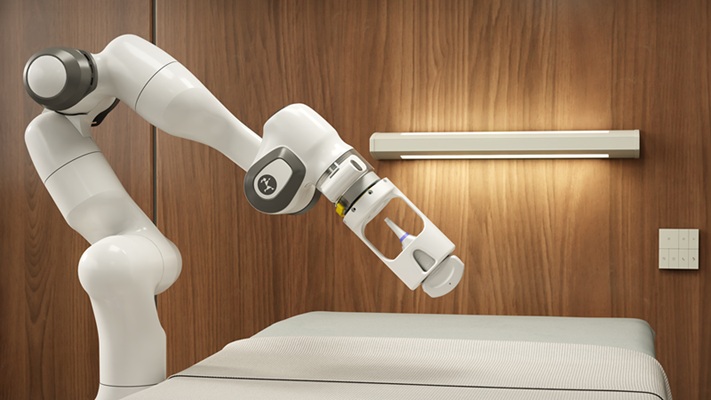Global Portable X-Ray Devices Market to Reach USD 6.87 Billion by 2022
By MedImaging International staff writers
Posted on 17 Jul 2019
The global portable X-ray devices market grew at a compound annual growth rate (CAGR) of 8.8% from 2014 to 2018 to reach nearly USD 4.70 billion in 2018 and is projected to grow at a CAGR of 10% from 2018 to 2022 to reach almost USD 6.87 billion by 2022.Posted on 17 Jul 2019
These are the latest findings of Research and Markets, (Dublin, Ireland), a global market research company.

Image: The MOBILETT Elara Max mobile x-ray machine (Photo courtesy of Siemens Healthineers).
During 2014-2018, the growth of the global portable X-ray devices market was driven by an increasing ageing population, growth of the home healthcare services market, and economic growth in the emerging markets. However, privacy and security concerns over data transfer in portable X-ray devices, and the high prices of portable X-ray devices negatively impacted the market growth.
Going forward, technological advances, an increasing number of patients with chronic diseases and rising awareness about portable medical devices are expected to drive growth of the global portable X-ray devices market. However, rising interest rates, and continued ethical and privacy concerns over data transfer in portable X-ray devices are likely to negatively impact the market growth.
Based on type of product, the mobile portable X-ray devices segment held the largest market share of 84.2% in 2018, while the handheld X-ray devices segment is expected to record the fastest CAGR of 14.6% during the forecast period. However, the mobile portable X-ray devices segment is likely to provide the highest growth opportunity and record global annual sales of USD 1.63 billion by 2022.
Based on type of technology, the computed radiography X-ray devices segment held the largest market share of 46.2% in 2018, while the digital X-ray devices segment is expected to record the fastest CAGR of 11.9% during the forecast period. The digital X-ray devices segment is also expected to provide the highest growth opportunity and record global annual sales of USD 1.04 billion by 2022.
Geographically, the Americas held the largest share of the global portable X-ray devices market at 44.6% in 2018, followed by Europe, Asia-Pacific and the Middle East and Africa (MEA). Going forward, the portable X-ray devices market in Asia-Pacific and Europe is expected to record the highest CAGR of 11.9% and 10.4%, respectively during the forecast period, followed by the Americas and the MEA with a CAGR of 9.4% and 8.8%, respectively.
In terms of competition, the global portable X-ray devices market is a concentrated one with the players focusing on technological innovations, expanding their portfolios through acquisitions, and creating innovative solutions with superior image quality equipment. In order to take advantage of the opportunities in the market, manufacturers of portable X-ray devices can consider focusing on manufacturing digital X-ray devices, expanding in the emerging markets, offer competitive pricing, increasing visibility through a high-performance website, and targeting the geriatric population.
Related Links:
Research and Markets














